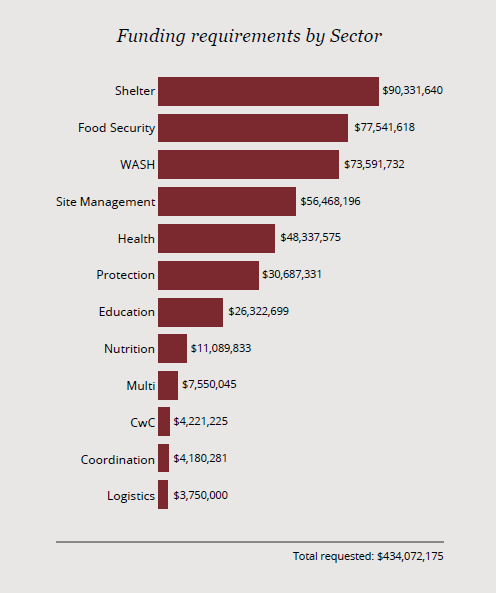The Rohingya refugee population in Bangladesh is growing day by day. In 2017, there were 1.2 million people in need of humanitarian aid. Responding to this crisis are 25 organizations on the ground who have evaluated an efficient response to cost $434 million, including $90 million for shelter.
The following 3 strategic objectives guide this response:
1. Provide life-saving basic assistance in settlements, camps, and host communities.
2. Improve conditions in and management of both existing and new settlements, including infrastructure and site planning.
3. Seek protection, dignity, and safety of Rohingya refugees.
Central to these objectives is shelter. Indeed, shelter is the starting point for people who have fled their homes and suffered psychological, physical or sexual abuse; people who are traumatized from the loss of family members and livelihoods.
The target was to construct 100,000 shelters to provide safety and protection from the elements and other dangers present in the camps for 942,000 people.
The financial requirements to reach these households in need of shelter is $90,331,640. This is the most substantial requirement in the Rohingya response plan, as seen in the following graph:

The conflict in Myanmar has disproportionately affected vulnerable people. In the August 2017 influx, 65% of the Rohingya refugees coming to Bangladesh were women and girls. It is likely that this figure has only increased since then. Many have suffered sexual violence – although rarely disclosed because of the stigma around this issue. Shelter and NFIs are essential for victims of this violence to regain a sense of safety and security.
Harsh climate further exacerbates the vulnerability of Rohingya refugees fleeing Myanmar. Monsoon season takes place from June to October. Bangladesh is a country that is known to have a very heavy rainfall. Therefore, the need for shelter as a protection from the environment is critical during monsoon season for the Rohingyas but also for local communities. The majority of the population arriving from Myanmar are without any material possessions to protect themselves or their family, with “only an umbrella for protection.”
Despite these alarming conditions, the funding requirements for shelter are far from being reached, preventing organizations from meeting the needs of all people in need:

Of the 681,000 people reached, ShelterBox is supporting 20,000 people (4,000 households) ; providing protection from rains, cold and winds. Shelter that is also vital for coping and keeping families together.
See page 13-15 of the report for details and references.
